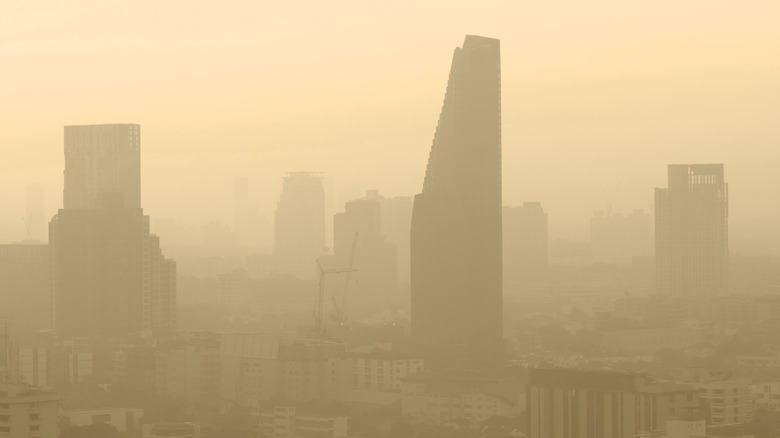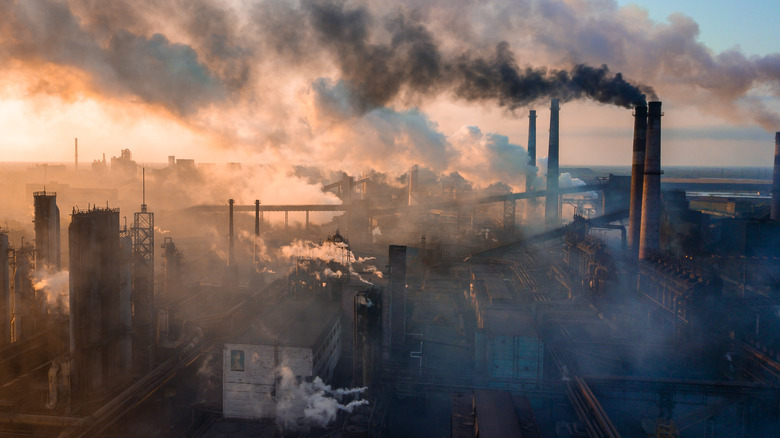Is Working Out Harmful If The Air Quality Is Bad?
Before heading outside for a workout, you might first check the weather forecast for rain or excessive temperatures. However, checking the air quality might also be a good practice. According to the Environmental Protection Agency (EPA), the air quality index measures levels of pollutants in the air, such as ground-level ozone. The local air quality index is updated each day, and some cities provide forecasts for the next day. A healthy value is 50, but values over 300 pose public health risks for everyone.
If the air quality is above 100, certain segments of the population might be at risk, such as older adults, children, or those with lung or heart disease. As for exercise, the EPA suggests limiting exercising for a long time or any workout that causes you to breathe heavily. This protects you from inhaling large amounts of pollutants in the air. For example, rather than play 18 holes of golf, play only nine or go to the driving range. If you planned a hard interval run, opt for a short, easy jog or take a walk.
How might air quality hurt me?
The EPA describes four different types of pollutants: ozone, particle pollution, carbon dioxide, and sulfur dioxide. During warmer months, "bad" ozone accumulates in the air when pollutants from cars or industrial plants respond to the sunlight. Because ozone irritates the respiratory system, it can make it more difficult to breathe. Over time, this causes damage and inflammation to the lungs, making you more prone to infection.
Particles from forest fires, cars, or road dust also can affect our health. If you have asthma or another lung disease, these tiny particles can aggravate your symptoms. Those with heart disease have an increased risk for heart attacks when these particles are heavy in the air (via EPA).
Most of the odorless carbon monoxide gas comes from your car's exhaust. It finds its way into your bloodstream through your lungs and blocks the oxygen in your system. Although carbon monoxide levels are a concern for children, older adults, and people who smoke, anyone can become sick from too much exposure. Common symptoms include dizziness, fatigue, or headache (per Occupational Safety and Health Administration).
Burning coal and oil produce sulfur dioxide, which is why the reactive gas is found mostly in industrial areas. Our nasal passages do a good job of preventing it from entering our bodies. However, if you're breathing hard during a workout, you're likely breathing in this gas. When sulfur dioxide is unusually high, healthy people might experience wheezing or shortness of breath (via EPA).


